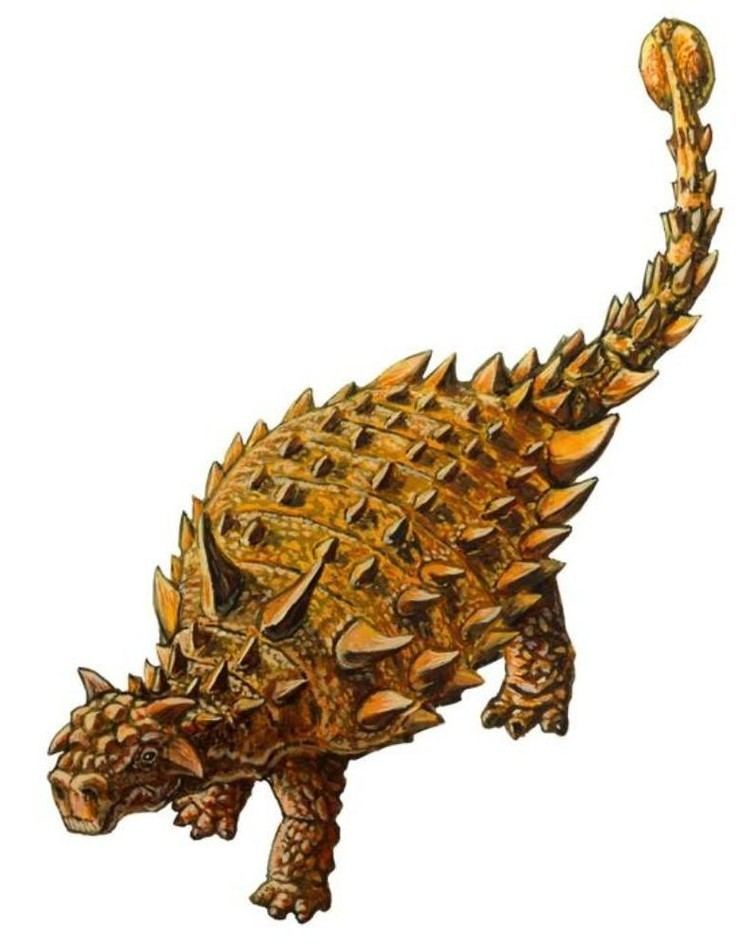Kingdom Animalia Clade Dinosauria Subfamily †Ankylosaurinae Phylum Chordata Order Ornithischia | Class Reptilia Family †Ankylosauridae Species †N. kirtlandensis Rank Genus | |
 | ||
Scientific name Nodocephalosaurus kirtlandensis Similar Cedarpelta, Glyptodontopelta, Aletopelta, Dyoplosaurus, Gobisaurus | ||
Nodocephalosaurus is a genus of herbivorous ankylosaurine ankylosaurid dinosaur from Upper Cretaceous (late Campanian stage) deposits of San Juan Basin, New Mexico. The holotype was recovered from the Late Campanian De-na-zin Member of the Kirtland Formation and consists of an incomplete skull. Nodocephalosaurus (Greek nodus = knob, kephale = head and sauros = lizard) is a monotypic genus, including only the type species, Nodocephalosaurus kirtlandensis. Dinosaurs like Nodocephalosaurus resembled Asian forms, and may be evidence for Asian dinosaurs migrating to North America in the Late Cretaceous.
Description and classificationEdit
The pattern of cranial ornamentation present in this ankylosaurid "is distinguished by semi-inflated to bulbous, polygonal, cranial osteoderms that are bilaterally and symmetrically arranged on the frontonasal region of the skull", and includes deltoid quadratojugal flanges and pyramid-shaped squamosal bosses.
The type description noted the taxon's similarity to the Monogolian ankylosaurids Saichania chulsanensis and Tarchia gigantea, and suggested that these three taxa form a clade within the subfamily Ankylosaurinae. However, Vickaryous and others consider this assignment provisional and list the genus as Ankylosaurinae incertae sedis.
There is also evidence of a paranasal sinus cavity in the maxilla. Sullivan also noted that material previously collected from the Kirtland Formation and assigned to the taxa Euoplocephalus or Panoplosaurus might actually represent additional remains of Nodocephalosaurus.
